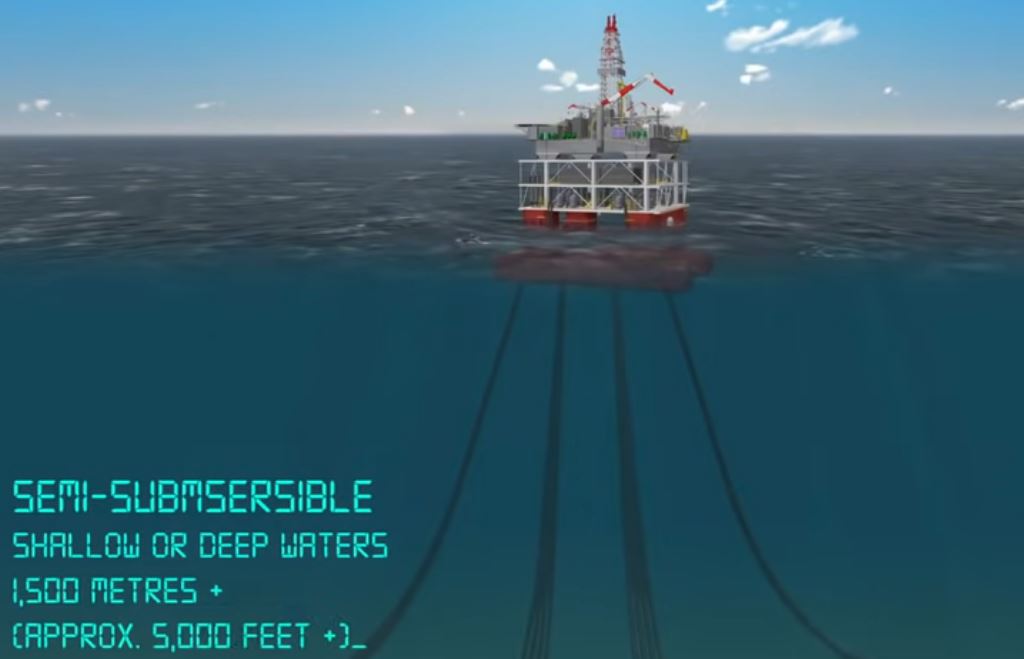What are the types of different offshore platforms?
Caralb News • May 31, 2021
Offshore structures are used worldwide for a variety of functions and in a variety of water depths, and environments.
Offshore platforms have many uses including oil exploration and production, navigation, ship loading and unloading, and to support bridges and causeways. Offshore oil production is one of the most visible of these applications and represents a significant challenge to the design engineer.
Offshore platforms are huge steel or concrete structures used for the exploration and extraction of oil and gas from the earth’s crust. Offshore structures are designed for installation in the open sea, lakes, gulfs, etc., many kilometers from shorelines. These structures may be made of steel, reinforced concrete or a combination of both. The offshore oil and gas platforms are generally made of various grades of steel, from mild steel to high-strength steel, although some of the older structures were made of reinforced concrete.
Offshore platforms are very heavy and are among the tallest manmade structures on the earth. The oil and gas are separated at the platform and transported through pipelines or by tankers to shore.
Drilling Barges
Drilling barges are used mostly for inland, shallow water drilling. This typically takes place in lakes, swamps, rivers, and canals. Drilling barges are large, floating platforms, which must be towed by tugboat from location to location. Suitable for still, shallow waters, drilling barges are not able to withstand the water movement experienced in large open water situations.
Jackup platforms/ rigs
Jackup rigs are similar to drilling barges, with one difference. Once a jackup rig is towed to the drilling site, three or four ‘legs’ are lowered until they rest on the sea bottom. This allows the working platform to rest above the surface of the water, as opposed to a floating barge. However, jackup rigs are suitable only for shallower waters, as extending these legs down too deeply would be impractical. This rig type can only operate to 500 feet in the depth of water. These rigs are typically safer to operate than drilling barges, as their working platform is elevated above the water level.
Semi-submersible platforms/ rigs
This is an offshore oil rig that has a floating drill unit that includes columns and pontoons that, if flooded with water, will cause the pontoons to submerge to a depth that is predetermined. Semi-submersible rigs are the most common type of offshore drilling rigs, combining the advantages of submersible rigs with the ability to drill in deep water. Semi-submersible rigs work on the same principle as submersible rigs; through the ‘inflating’ and ‘deflating’ of its lower hull. The rig is partially submerged, but still floats above the drill site. When drilling, the lower hull, filled with water, provides stability to the rig. Semi-submersible rigs are generally held in place by huge anchors, each weighing upwards of ten tons. These anchors, combined with the submerged portion of the rig, ensure that the platform is stable and safe enough to be used in turbulent offshore waters. Semi-submersible rigs can also be kept in place by the use of dynamic positioning. Semi-submersible rigs can be used to drill in much deeper water than the rigs mentioned above. Now with a leap in technology, depths of up to 6,000 feet (1,800 m) can be achieved safely and easily. This type of rig platform will drill a hole in the seabed and can be quickly moved to new locations.
Drillships
Drillships are exactly as they sound: ships designed to carry out drilling operations. These boats are specially designed to carry drilling platforms out to deep-sea locations. A typical drillship will have, in addition to all of the equipment normally found on a large ocean ship, a drilling platform and derrick located on the middle of its deck. In addition, drillships contain a hole called a “moonpool”, extending right through the ship down through the hull, which allows for the drill string to extend through the boat, down into the water. This offshore oil rig can drill in very deep waters. Drillships use ‘dynamic positioning’ systems. Drillships are equipped with electric motors on the underside of the ships hull, capable of propelling the ship in any direction. These motors are integrated into the ships computer system, which uses satellite positioning technology, in conjunction with sensors located on the drilling template, to ensure that the ship is directly above the drill site at all times.
Fixed platforms
In certain instances, in shallow water, it is possible to physically attach a platform to the sea floor. This is what is shown above as a fixed platform rig. The ‘legs’ are constructed of concrete or steel, extending down from the platform, and fixed to the seafloor with piles. With some concrete structures, the weight of the legs and seafloor platform is so great, that they do not have to be physically attached to the seafloor, but instead simply rest on their own mass. There are many possible designs for these fixed, permanent platforms. The main advantages of these types of platforms are their stability; as they are attached to the sea floor, there is limited exposure to movement due to wind and water forces. However, these platforms cannot be used in extremely deep water; it simply is not economical to build legs that long.
Tension leg platforms
Tension leg platforms are larger versions of the Seastar platform. The long, flexible legs are attached to the seafloor, and run up to the platform itself. As with the Seastar platform, these legs allow for significant side to side movement (up to 20 feet), with little vertical movement. Tension leg platforms can operate as deep as 7,000 feet.
Spar Platforms
Spar platforms are among the largest offshore platforms in use. These huge platforms consist of a large cylinder supporting a typical fixed rig platform. The cylinder however does not extend all the way to the seafloor, but instead is tethered to the bottom by a series of cables and lines. The large cylinder serves to stabilize the platform in the water, and allows for movement to absorb the force of potential hurricanes. The first Spar platform in the Gulf of Mexico was installed in September of 1996. It’s cylinder measured 770 feet long, and was 70 feet in diameter, and the platform operated in 1,930 feet of water depth.
Floating production systems
Floating production systems are essentially semi-submersible drilling rigs, as discussed above, except that they contain petroleum production equipment, as well as drilling equipment. Ships can also be used as floating production systems. The platforms can be kept in place through large, heavy anchors, or through the dynamic positioning system used by drillships. With a floating production system, once the drilling has been completed, the wellhead is actually attached to the seafloor, instead of up on the platform. The extracted petroleum is transported via risers from this wellhead to the production facilities on the semi-submersible platform. These production systems can operate in water depths of up to 6,000 feet.
Sadeghi, Kabir. 2007. An Overview of Design, Analysis, Construction and Installation of Offshore Petroleum Platforms Suitable for Cyprus Oil/Gas Fields. GAU J. Soc. & Appl. Sci., 2(4), 1-16. Recovered from http://large.stanford.edu/courses/2014/ph240/liegl2/docs/sadeghi.pdf
Offshore platforms: 101. 2016. BP. Recovered fromhttps://www.youtube.com/watch?v=-vJmAvqn6dU&list=RDCMUC9m-Yl4kfv8nIriI7Ry8CxA&start_radio=1&rv=-vJmAvqn6dU&t=215























